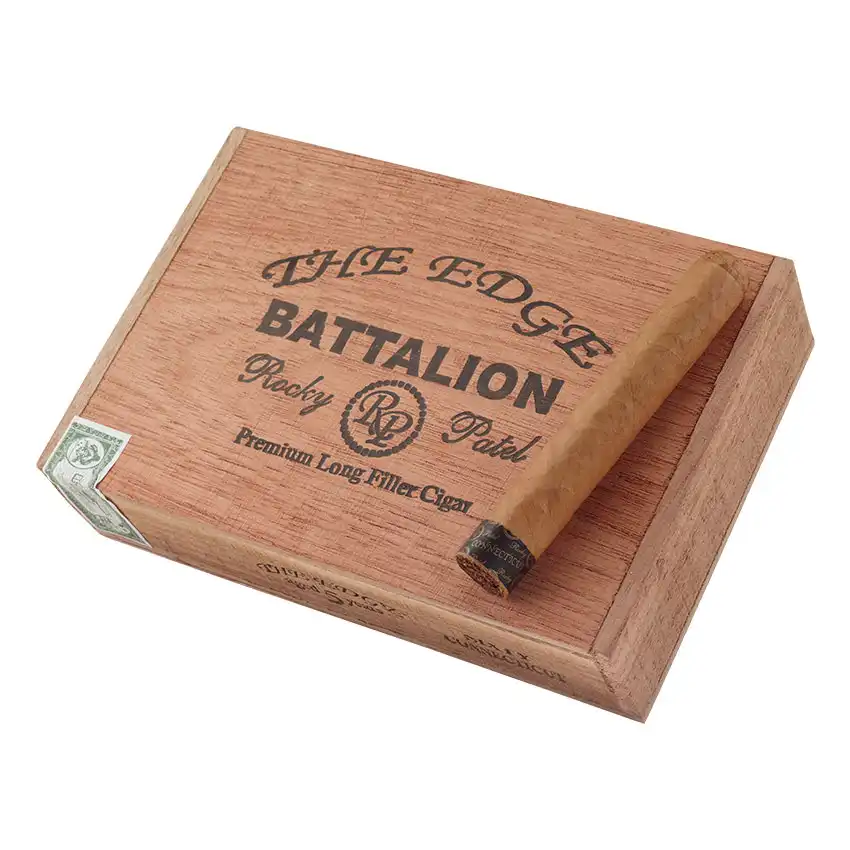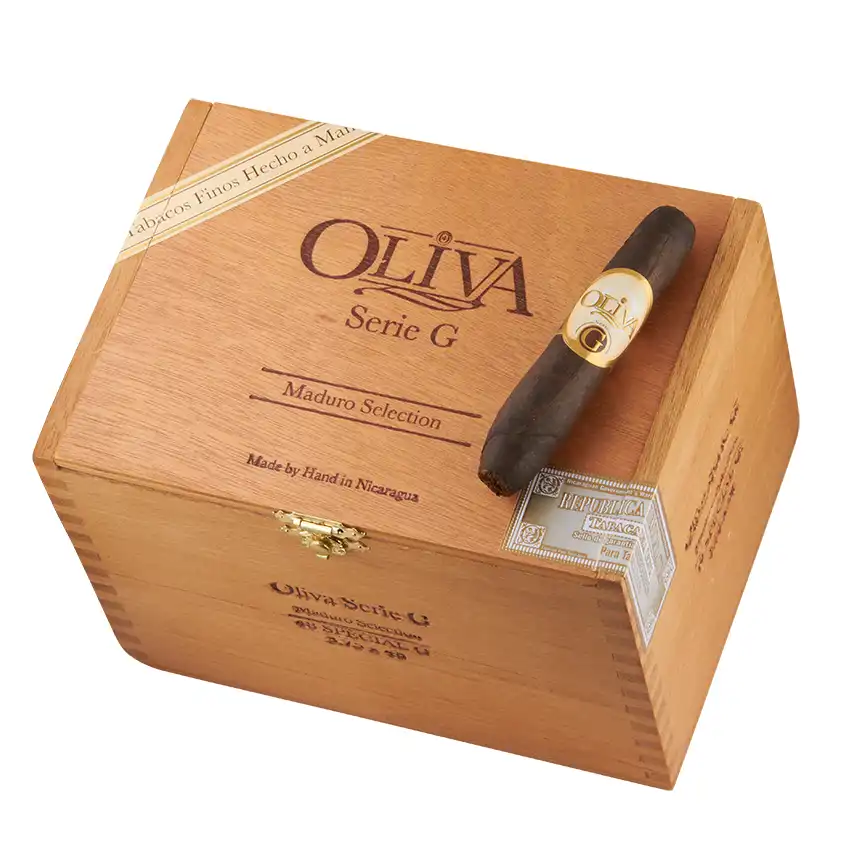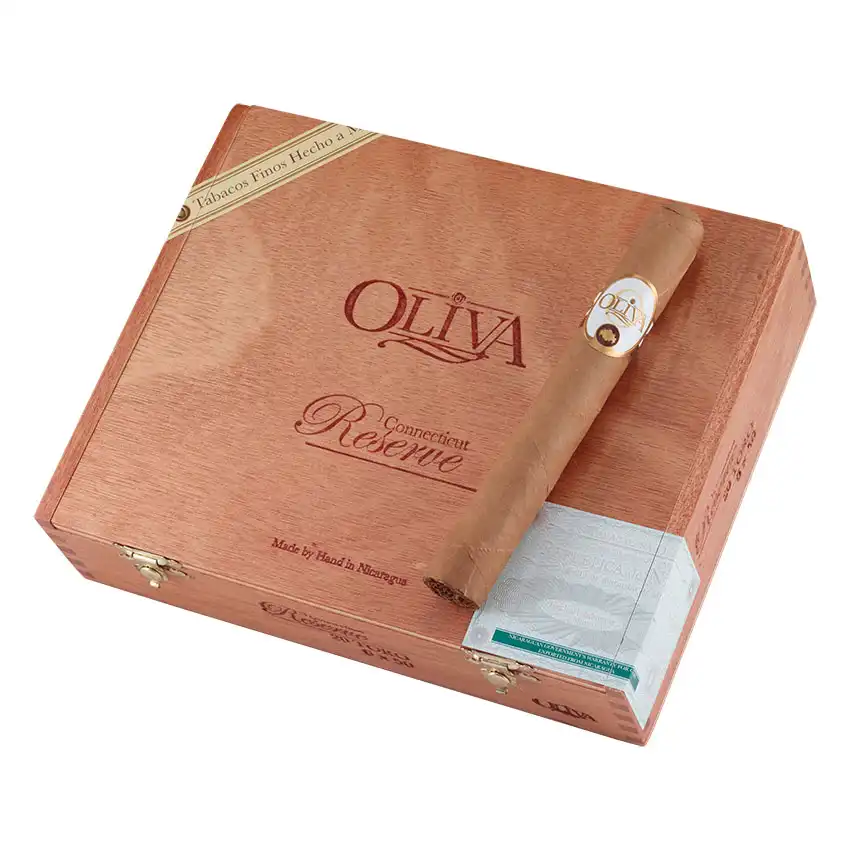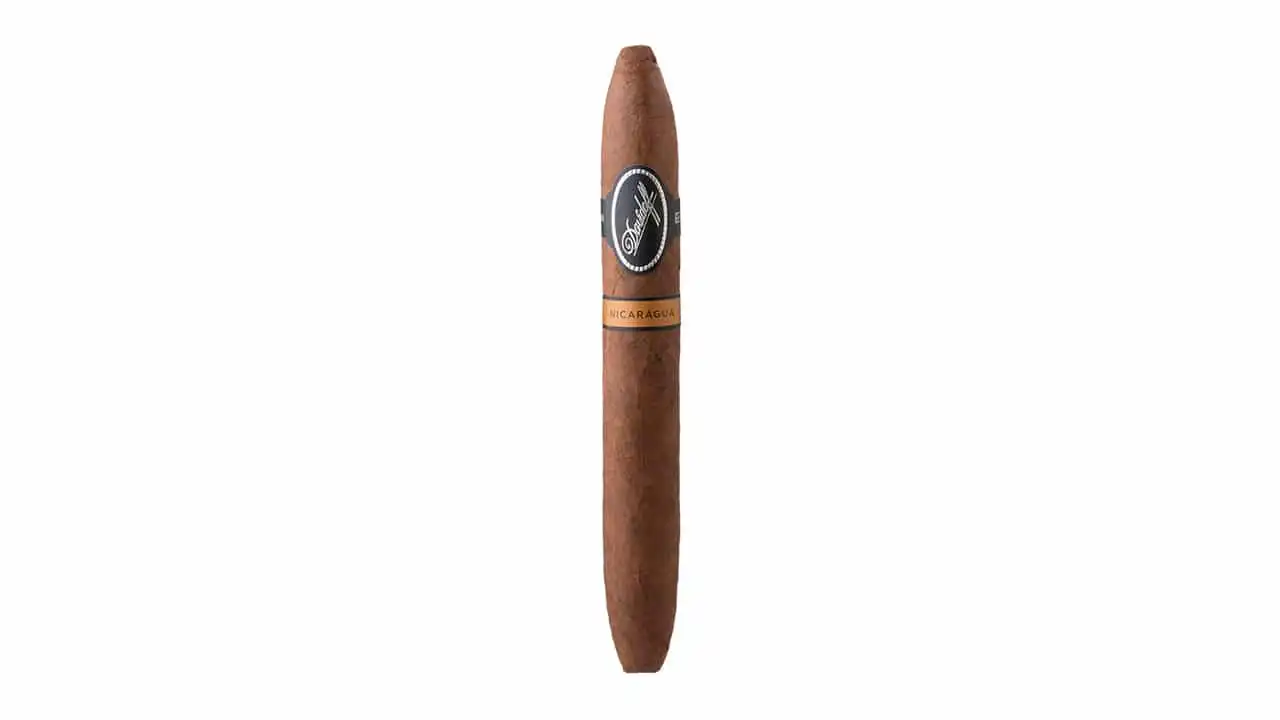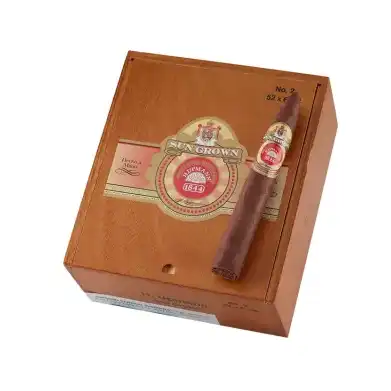New to cigars? Consider this your Cigars 101 course. Learn how to choose a cigar, plus how to cut, light, and smoke it the correct way 🚬
I really enjoy the rare moments I get to have a cigar and a glass of bourbon after a long week, either on my own or with friends. Most of us are too busy, so taking the time to slow down, indulge the palette, and have good conversation is a true pleasure.
But hey, maybe you don’t smoke cigars.
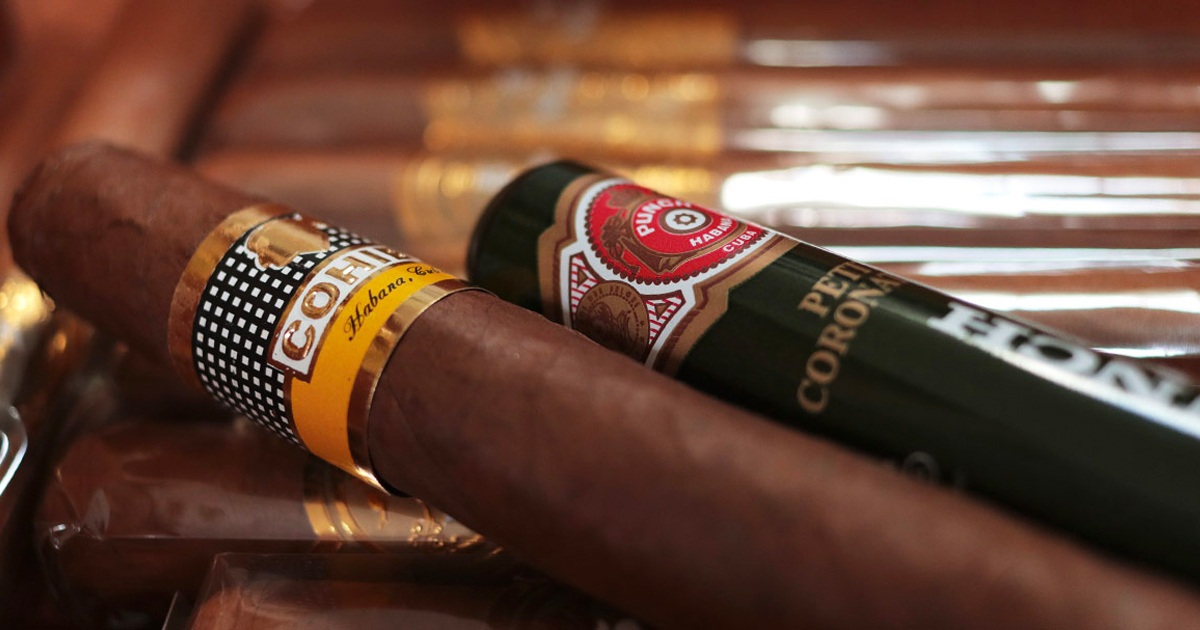
The thing is, there may come a time when someone offers you a cigar to smoke in celebration. The classic examples: the birth of a child, getting a new job, or buying a new home.
If you don’t want a cigar, no worries, politely decline.
But if you do want one—even if you don’t normally smoke cigars—accept the gesture and enthusiastically take part in the celebration. It’s something truly special.
And perhaps you want to partake, but you don’t know what you’re doing.
The last thing you want to do when sharing a cigar with friends or family is to look like an idiot. What if you’ve never been comfortable with the art of cigar smoking? What if it’s totally new to you?
That’s exactly why we’ve put together this resource for you.
We’re covering everything you need to know: How to choose your first cigar, how to cut it, light it, smoke it, and enjoy it.
Plus we’ll go over how to buy a humidor (if you want to keep a few sticks at home), answer your cigar FAQs, and address some Dos and Don’ts when it comes to smoking cigars.
How To Choose A Cigar That’s Satisfying And Affordable
Just like choosing a fine whiskey, vintage leather jacket, or your next novel to read, finding the right cigar comes down to a matter of personal taste .
And for newcomers to the world of craft tobacco, understanding how cigar tobacco is made, processed, rolled, and aged is an essential first step in developing a knowledge base to compare your taste impressions to.
With that in mind, let’s take a much closer look at the factors that play a role in developing a cigar’s signature flavor, aroma, and smoking experience.
Learn The Lingo: Size, Shape, And Composition
Every cigar manufacturer has developed their own house style over years of experimentation in growing, fermenting, drying, and rolling their tobacco leaves into memorable cigars.
While many of the trade secrets of legendary cigars come down to growing and fermentation conditions, three variables can clue you in on what to expect out of your smoke: Size, Shape, and Composition.
Cigar Sizes Explained
Cigar size is measured by two dimensions: The ring gauge (diameter) and length. An elaborate Spanish naming system designates the different sizes of cigars, from the tiny Cigarillo to the enormous Gran Corona.
The longer and fatter a cigar is, the longer its burn time — and vice versa. For a “standard” cigar size, look towards the straight-sided Corona, measuring 5 ½ inches long with a ring gauge of 42.
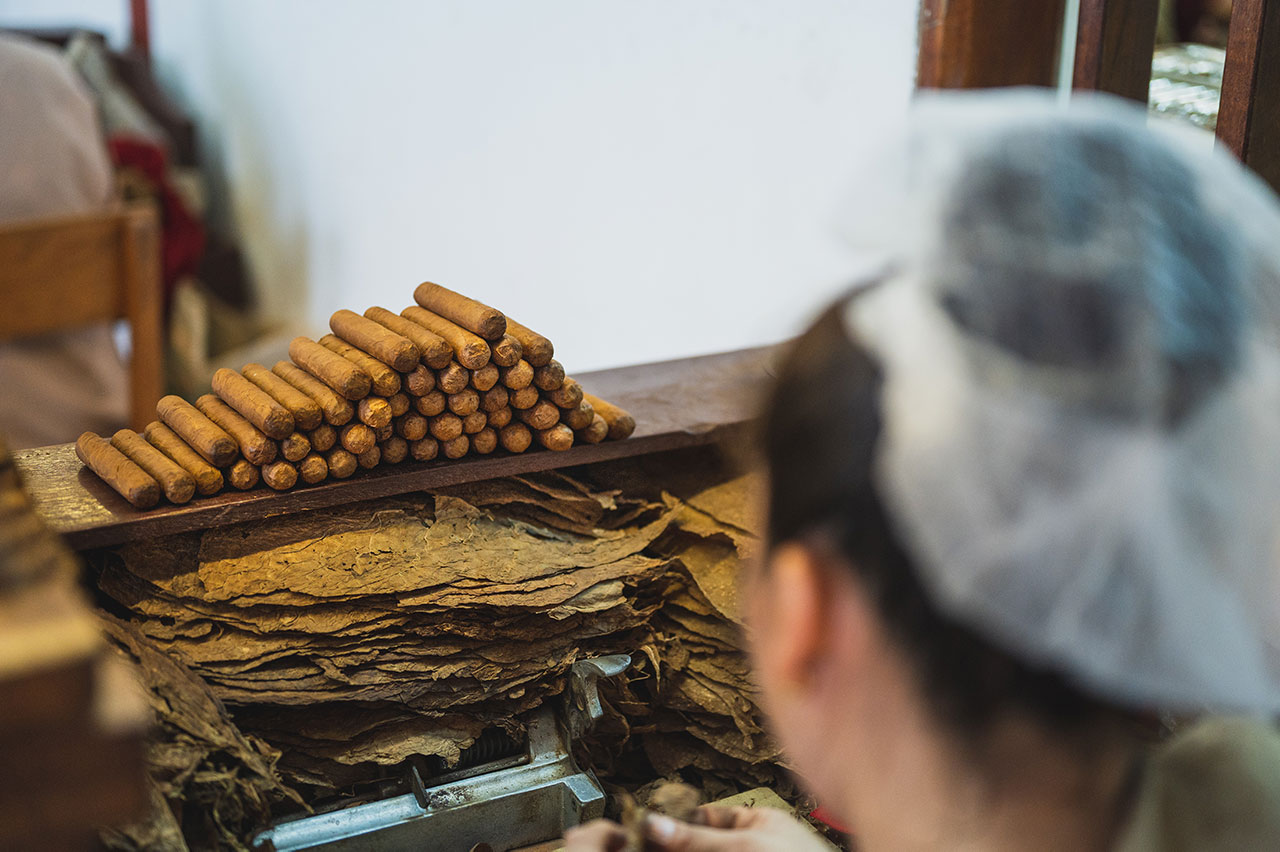
Cigar Shapes
The Corona mentioned above, also known as a Parejo, holds sway as the standard shape for cigars as well. Straight-sided with a cylindrical body, one open end, and a round end cap, the Corona is likely what you think of when you imagine a cigar.
In large part, the Corona has become the standard cigar shape because of how easy they are to roll in comparison to Figurados, or irregularly shaped cigars.
While some cigar aficionados swear by the flavor effects afforded by oddly-shaped cigars, beginners will do well to stick with the wide variety of sizes available for the standard Corona.
Composition (What’s a cigar made of?)
Each and every cigar is composed of three different types of tobacco leaves: A wrapper, binder, and filler, all of which contribute to the unique flavor and smoking characteristics of a specific brand.
Whereas size and shape are fairly standardized, the unique composition of a cigar is where you start to see the skill and mastery of the tobacconist that produces it.
Because the wrapper determines much of the cigar’s flavor and overall character, it is easily the most expensive component of a cigar — and an easy way to judge quality at a glance.
Lighter wrappers will produce a lighter-bodied smoke, while darker wrappers produce a heavy or even syrupy flavor.
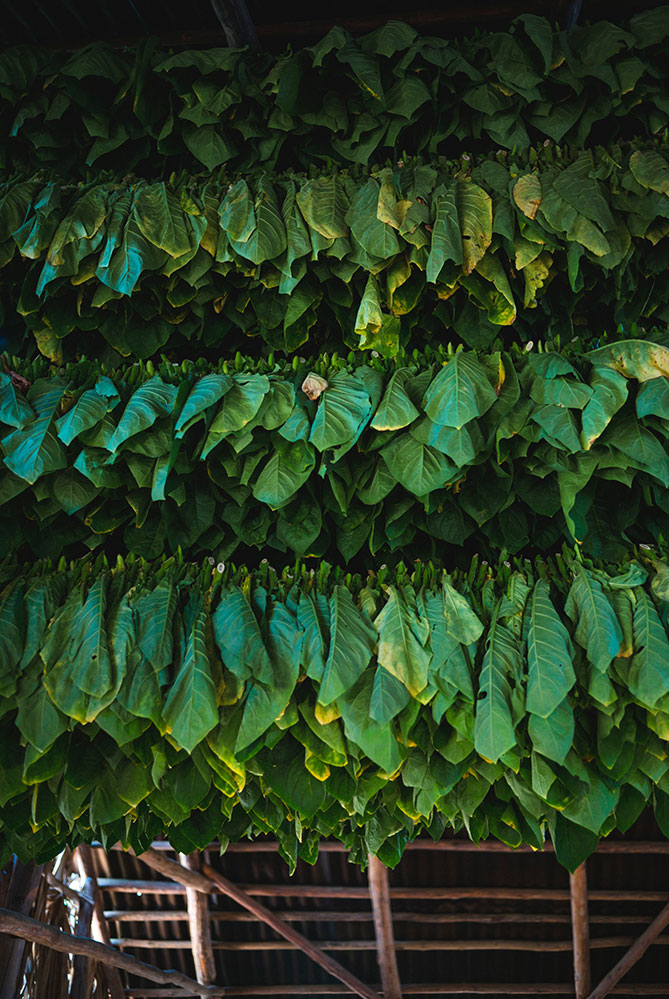
Beneath the wrapper, a folded collection of tobacco leaves (the filler) is held in place by a thick and durable binder. This forms the bulk of the cigar, and the tightness with which the filler is packed will contribute to how long of a smoke the cigar gives; denser fillings produce longer smokes.
The Different Types of Cigars
Each cigar, then, is a culmination of size, shape, and composition into a broad flavor category.
As you’re looking through this list, think of any tasting experiences you may have enjoyed with past cigars: Was the cigar light, or dark? Was it a large cigar, providing a long smoke? Which flavors did you like or dislike?
If you’re looking to go all the way into cigars as a hobby or passion in life, I recommend collecting your impressions in a cigar tasting journal, like this pocket sized log book.
The Best Cigar Size for Beginners
First-timers in the cigar world are often overwhelmed by the variety of sizes, shapes, and tastes on offer.
Thankfully, there’s a simple short cut that any beginner can take to fast track their enjoyment of cigars: Start with the Corona, since it is the benchmark that producers measure the flavor profile and smoke length of their other sizes against.
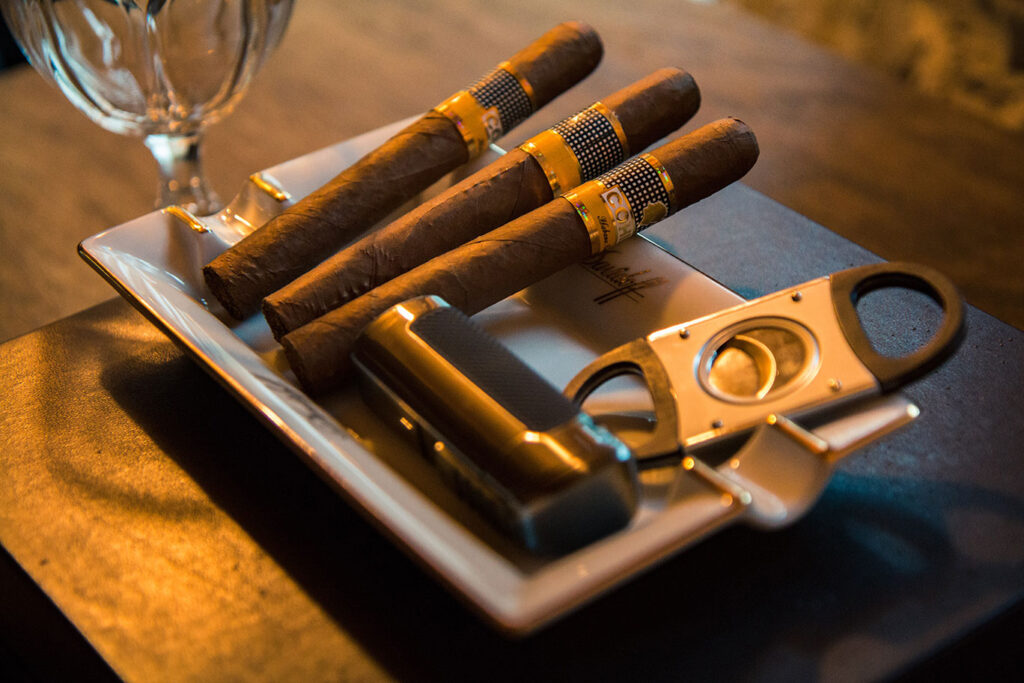
Stick with the standard Corona size, and you’ll be able to compare all of the other variables without getting bogged down in unnecessary details. When Coronas aren’t available, the Robusto is your best alternative; they offer a slightly more intense flavor, often with a fuller draw but a similar smoke time.
How Much Are Cigars? And Where Should I Buy Them?
Especially for beginners, smoking a fine cigar shouldn’t put a dent in your wallet. Expect to find a satisfying stick for under $10, with many a great beginner’s cigar in the $5-$8 range.
Novices would do well to visit a brick and mortar cigar shop, because you can get the help of a real tobacconist who knows the cigars they sell and can make an ideal recommendation.
Online stores are great, and you may be able to find better deals online, but the first time around, getting the help of an expert in the shop is a smart idea.
(Of course, you can read check out our guide to the 10 best cigars under $10 if you want to skip the shop all together—these are available online)
Whatever you do, do not buy your first (or any subsequent) cigar at a gas station or convenience store. They’re usually cheap, they’re not properly stored in a humidor, and you will almost certainly wind up regretting your purchase.
Eight Cigars Worth Trying (Great Options For New And Experienced Cigar Smokers)
Cigar Option #1: Macanudo Cafe
Light-bodied and exceptionally easy to smoke, Macanudo’s Cafe cigars come in a wide range of shapes and sizes.
Macanudo’s Cafe line might well be the perfect cigar to introduce beginners into the joys of fine tobacco.
And with every stick in this line available under $10, they’re a great way to explore the finer points of cigar construction and composition.
Expect a delightfully uncomplicated smoke that’s great for anytime indulgence. Macanudo’s Cafe makes for a great introduction to cigars, and an excellent encouragement towards trying bolder flavors later.
Cigar Option #2: CAO Gold Vintage
CAO Gold Vintage cigars are enclosed in Ecuadorian Connecticut wrappers grown in 2004, a particularly good year, (I wonder how they manage to keep producing cigars with this wrapper though), with a combination of Cuban-seed Honduran and Nicaraguan tobacco inside.
This cigar offers a smooth, creamy, mild flavor with subtle nutty flavors and takes on a medium-bodied character as you progress.
This cigar offers a smooth, creamy, mild flavor with subtle nutty flavors. The blend takes on a medium-bodied character as you progress. If you cannot decide between a mild- or medium-bodied cigar for your first smoke, this is a perfect choice.
Cigar Option #3: 5 VEGAS Gold
Named for the 5-year aging of its filler tobaccos, the 5 Vegas Gold (pronounced “Cinco Vegas”) is the most popular offering from a powerhouse in the handmade cigar world.
An initial spice and lemon zest draw quickly mellows into a long smoke that is smooth, creamy, and nutty.
Handsomely decorated yet remarkably affordable, the Gold feels like a luxury cigar without the exaggerated price tag.
An initial spice and lemon zest draw quickly mellows into a long smoke that is smooth, creamy, and nutty. The longer you smoke it, the more pronounced the natural tobacco sweetness becomes.
Cigar Option #4: Rocky Patel Edge Connecticut
Rocky Patel is a boutique cigar manufacturer who has risen to prominence in the premium cigar world despite the odds, and it’s thanks largely to amazing blends like this one.
The Rocky Patel Edge Connecticut is a light- to medium-bodied cigar with a rich, creamy flavor and an excellent draw and burn.
The Rocky Patel Edge Connecticut is a light- to medium-bodied cigar with a rich, creamy flavor and an excellent draw and burn.
And it only costs around $5, which makes it a great choice for a cigar newbie.
Cigar Option #5: Oliva Serie G / Oliva Connecticut Reserve
Oliva is best known for manufacturing delicious full-bodied cigars. The Serie G Maduro is a great example, with a dark oily wrapper and amazingly rich chocolate and coffee flavors against a backdrop of toasted nuts.
The Serie G Maduro has a dark, oily wrapper and amazingly rich chocolate and coffee flavors against a backdrop of toasted nuts.
If you’re interested in Oliva but prefer to try something milder, the Connecticut Reserve is a light-to-medium bodied cigar with flavors of butter and toasted almonds.
Oliva's Connecticut Reserve is a light-to-medium bodied cigar with flavors of butter and toasted almonds.
Thanks to those flavorful and aromatic touches, it’s a milder smoke without ever being dull or forgettable.
Cigar Option #6: Davidoff Nicaragua Diadema
You’re almost smoking a piece of history with the Diadema. Davidoff surprised the cigar world when they came out with their Nicaragua line, as they were a go-to for mild, often Dominican cigars.
Impressive at every stage for its all-Nicaraguan leaf blend and superb balance, the Davidoff Nicaragua Diademas cigar presents a deftly rolled figurado designed to concentrate its creamy, earthy, and complex smoke directly to the palate
The beautifully tapered Diadema (which helps bring out the nuanced notes) is bold in nutmeg, hits high with a dry, fruity sweetness, and gives a hint of maple.
It’s a bit of an investment cigar, but the kind that checks all of the boxes, like a good whiskey does: The taste, the smell, and the visuals.
Cigar Option #7: Gran Habano No. 1
While the Diadema is a premium cigar that even beginners can enjoy, the Gran Habano Connecticut No.1 is a beginner-friendly blend that aficionados would agree is well-balanced enough for every level of smoker.
Gran Habano #1 Gran Robusto cigars present a mellow, yet rich tasting Honduran cigar of very high quality. Blended with mild Nicaraguan fillers and an Ecuadorian Connecticut wrapper, the smoke is smooth and relaxing.
Basically, it’s smooth and comfortingly roasty, a perfect “nightcap” cigar after a rich meal. Part of this comes from the creamy aroma of the wrapper.
It’s like a standard, but good, mild cigar with just a touch more personality that doesn’t distract.
Cigar Option #8: H. Upmann No. 2
Though esteemed, and a real heritage cigar maker in the Cuban space, H.Upmann is a relatively smaller presence in said space. They usually come out with super mild flavors, but the No.2 is a medium-bodied experience that’s impressively flavor efficient.
The No. 2 is highlighted by a flavorful Ecuadorian sun grown wrapper surrounding a hand-selected broadleaf binder and a blend of fine Nicaraguan and Honduras fillers.
It’s well-spiced, and even has some saltiness in it. It’s not an ocean salt per se, but more like a nutty salt, which is balanced out with hints of floralness.
The cigar is curved, as any Figurado is, but the moderate build and taper towards the mouth side brings the taste right to your tongue, then builds flavor so that the last puff is even better than the first.
How to Cut A Cigar Properly
This is something all men who smoke cigars should know how to do. It does not involve: Scissors, Swiss Army knives, or your own teeth.
Especially not your teeth!
In most cases, the best cutting option is straight cut. Use a single bladed cigar cutter to chop off the head in one motion and leave the wrapper intact.
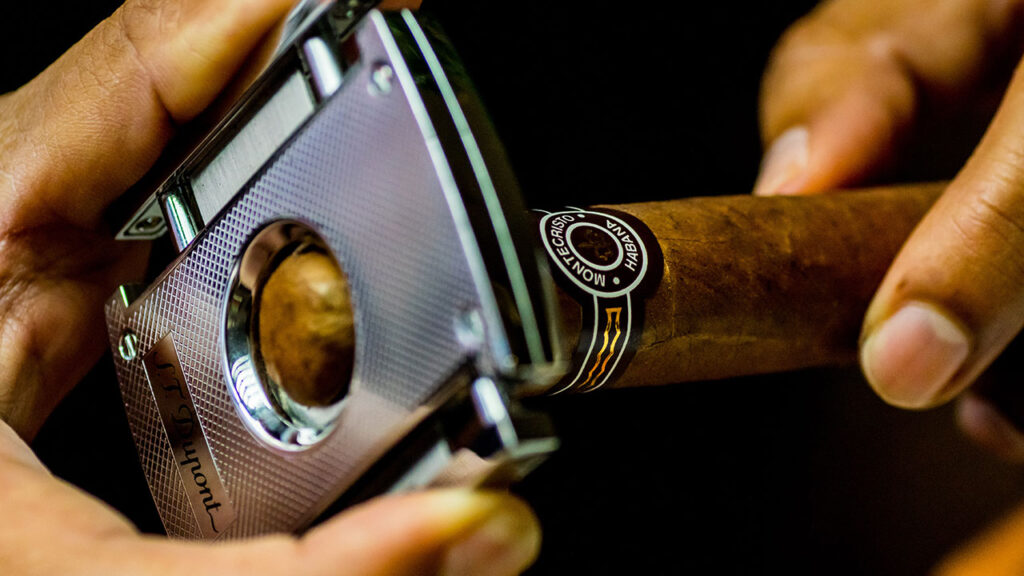
Cut the cap on the ‘head’ (that’s the end you smoke — the end you light is called the ‘foot’) to create enough of an opening to smoke it comfortably while not distorting the shape of the cigar.
Don’t cut too far down the cigar! If you cut past where the cap ends (look closely and you will notice the directional difference of the cigar wrapper and the cap), the cigar may unravel.
This, obviously, is a very unpleasant smoking experience because the entire cigar falls apart in your hand. Cut above the line where the cap ends and you’re good.
How To Light A Cigar
First of all, you’ll need a butane torch lighter.
Standard cigarette lighters (the kind you might get from a gas station) won’t burn hot enough or even enough, and can quickly lead to uneven burning and a subpar smoking experience.
Matches can be used, but require much more skill and are more prone to error. And if you want to get really serious, you can light a cedar strip, and use that strip to light your cigar.
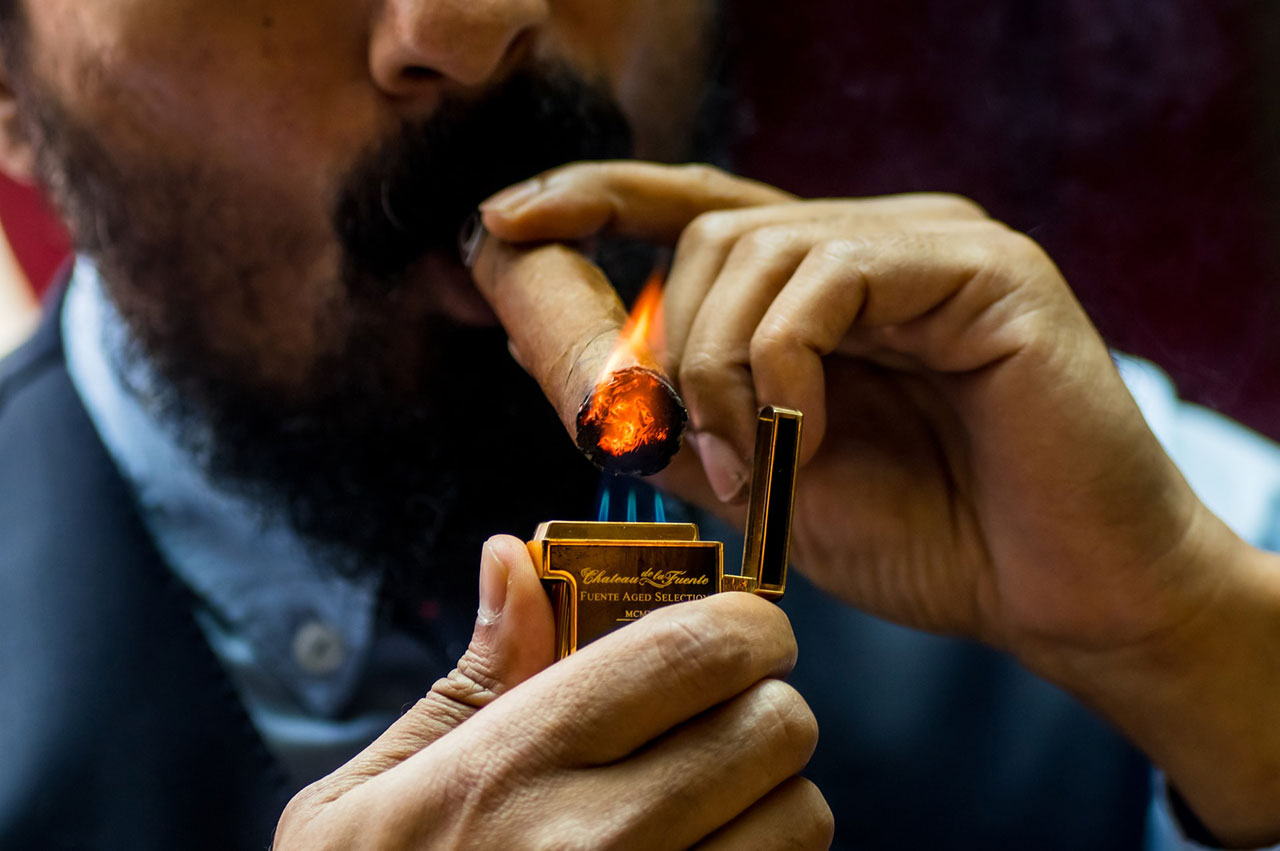
With a torch lighter, follow along with these steps:
- Toast the foot of the cigar. Hold the tip of the cigar (also called the foot) at a 45 degree angle, about 3 to 4 inches from the flame on your lighter. Roll this around, taking your time to slowly dry and crisp up the wrapper and binder.
- Roll the cigar while puffing. Move the cigar and/or lighter while you’re doing this so that the entire foot is toasted evenly, including the binder, wrapper, and filler.
- Check for an even burn. Take a look at the foot every few puffs, and make sure the entire tip of the cigar is lighting evenly. Once the surface is glowing evenly, let it rest for a moment to stabilize.
- Move the lighter and cigar closer together. Even if you can’t see the light of the flame on a butane torch lighter, it’s still heating! Slowly inch the two closer together, looking for the foot of the cigar to send off larger flames.
- Enjoy your smoke. Congrats, you now have an evenly lit cigar to savor!
How To Smoke A Cigar (The Right Way)
A cigar is so much more than an oversized cigarette—it’s an opportunity to slow down, enjoy the company of friends, and find relaxation outside of the always-on times we live in.
How do you smoke a cigar? It’s pretty simple:
- Puff the cigar (using your cheeks, like it’s a straw)
- Hold the smoke in your mouth
- Enjoy it
- Blow it out of your mouth
- While smoking, slowly rotate the cigar to get an even burn
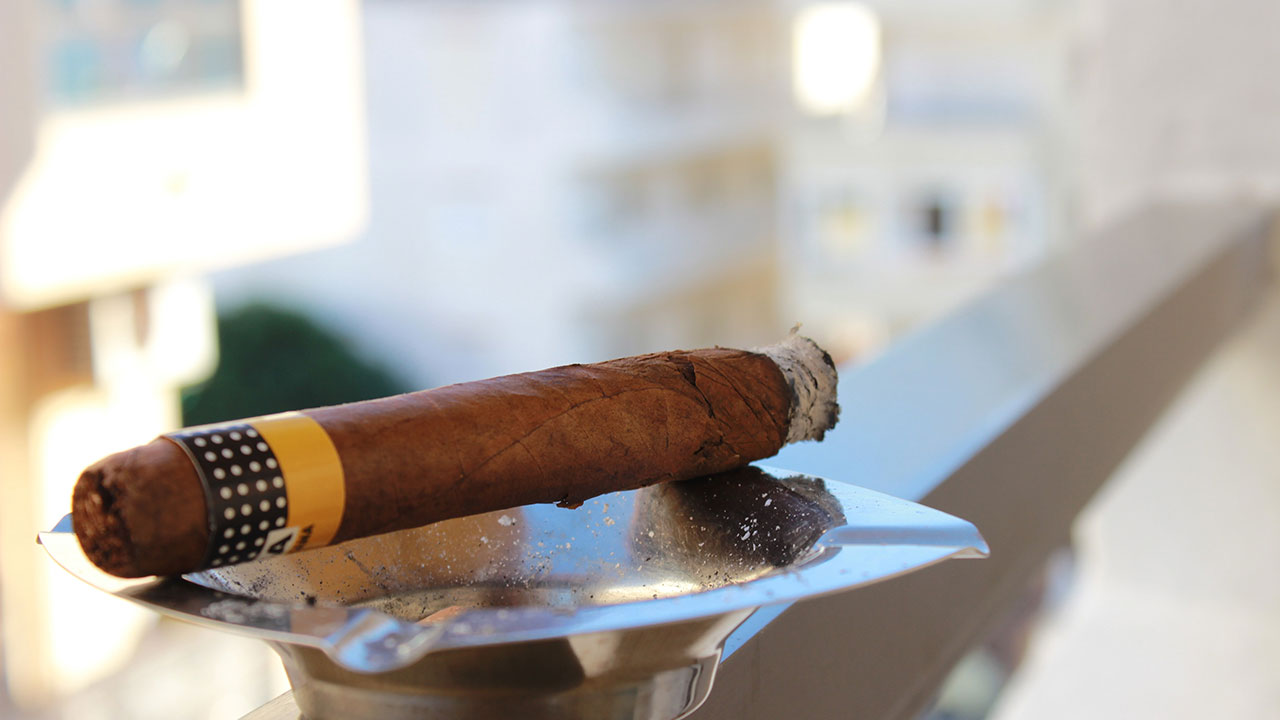
For cigarette smokers: Do not take a drag off it like you would a cigarette – and do not inhale. If you inhale, you run the risk of charring a lung or becoming nauseated in a hurry.
Basic Cigar Smoking Etiquette: Do’s and Dont’s
Don’t light up your cigar with someone else’s. This will cause their cigar to burn unevenly. Instead, ask to borrow the best lighter that’s available in the room.
Cigars are not meant to be shared, for hygienic reasons. Don’t ask your friend to try a puff of his cigar — write down the details of the cigar in your notebook, and try it at a later date.
Be mindful of where you blow your smoke. Cigars can be unpleasant for non-smokers, so always make sure the people around you are comfortable with the smoke.
Don’t stub your cigar out like you would a cigarette when you’re done. Just lay it down in the ashtray, and it will burn out on its own.
Remove the cigar band (or don’t, haha). General cigar etiquette dictates removing the band when you start smoking. (I personally don’t do this.)
While this is mainly a matter of opinion and taste, we do enjoy keeping the bands of our favorite cigars in a collector’s book.
What to Drink With A Cigar
Look back on any classic image of a debonair man smoking a cigar, and you’re almost guaranteed to find his favorite alcoholic tipple nearby.
While personal preference certainly plays a large part in anyone’s choice of beverage to pair with tobacco, cigar novices will find the following suggestions to be an easy match:
Whiskey: A Perfect Pairing
Whiskey might be a cigar’s most natural companion. Distilled from grain and aged in oak, a good whisky will give an experience of both cigar and spirit enhancing each others’ flavors while bringing out new qualities in their partner.
Americans will get the best bang for their buck by choosing bourbon, but scotch whisky can offer a more honeyed or smoky characteristic.
Cigars and Coffee: Another Great Match
When time allows, try a strong, rich, black coffee or double espresso with a cigar for an afternoon pick-me-up. I personally can’t think of a better (non-alcoholic) pairing.
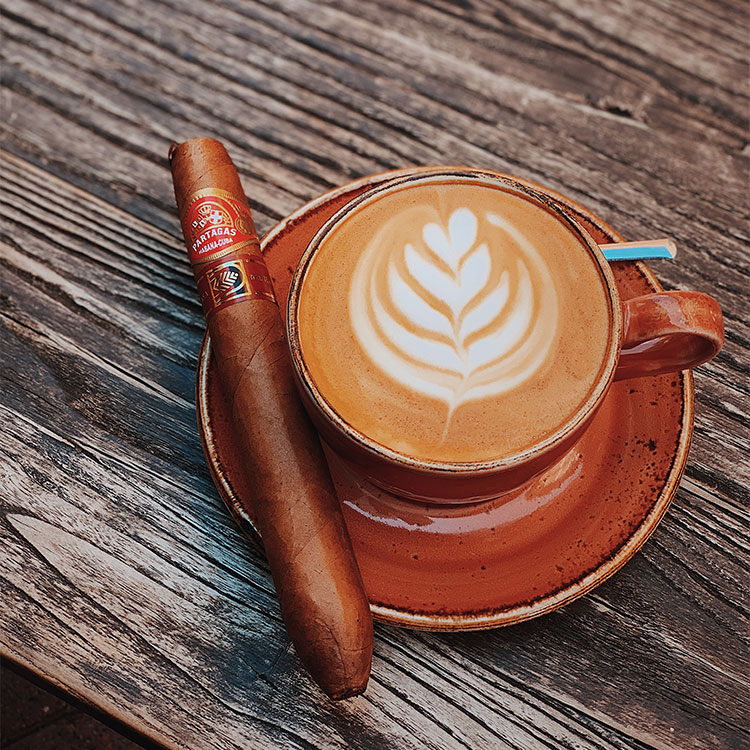
The best pairings are based on preference (as are most things), but in general, I like to complement a strong brew with a mild Connecticut stick, something like the CAO Gold we mentioned above.
The Best Beers With Cigars
As far as beer goes, dark and fuller-bodied porters and ales tend to pair better with cigars than lagers, fruit ales, or wheat beers. The darker your cigar, the darker a beer can be and still pair well with it.
What About Wine and Cigars?
Red wine can be a surprisingly pleasant foil to cigars, but you’ll want to pair it inversely to the strength of the cigar.

Full-bodied cigars can be “cleaned up” by a lighter red like a pinot noir, while lighter smokes will benefit from the punch and tannin of a jammy shiraz or zinfandel.
Do Cocktails Go With Cigars?
Cocktails are as vast an arena of tasting experience as you can find, making it a bit more challenging to pair with a specific cigar. Stick with a bourbon cocktail, and you’ll be happy with the results.
You can never go wrong with the classics: an Old Fashioned, Negroni, or Boulevardier are my go-to choices, if someone offers me a drink 🥃
How To Choose and Buy A Humidor To Store Cigars
Let’s say you’ve tried a few of the cigar recommendations above.
You have an idea of what sticks you like, so you want to buy several and keep them at home for special occasions. Where should you store them?
“So, do I need a humidor now?”
First off, how many cigars do you have? If you still don’t have a big collection, you may not need a humidor yet. Some handy household supplies – like zip lock bags – will do for now.
You can also create your own makeshift humidor from a cooler: a Coolidor (check out this post or this video if you’re curious). Another option is to use well-sealed Tupperware as a humidor: a Tupperdor.
So put it this way: If you’re 1.) just starting out, 2.) you only have a handful of sticks, and 3.) you don’t know if you’ll pick up cigar collecting / smoking as a regular hobby, then a quality Ziploc bag should be just fine.
If you want to be extra cautious—it would suck if your sticks dry out or get moldy—but aren’t sure if you want to buy an actual humidor yet, you can purchase a special humidor bag.
Store your cigars in a heavy-duty, humidity-controlled plastic humidor bag, engineered 3x stronger than a food storage bag and provides the same protective moisture barrier as a Tupperdor.
The Coolidors and Tupperdors are decent—I can see the Coolidor being a great alternative if you have tens or hundreds of cigars, but no space for a large cabinet humidor—but if you’re getting serious about your cigars, just invest in a tabletop humidor.
Lucky for you, they don’t have to be expensive. Let’s get into the details.
What exactly is a humidor?
A humidor is a specially designed storage container for cigars. It preserves the careful combination of temperature and moisture that will keep a cigar in ideal condition.
It’s not a totally sealed environment, since that could cause molding. Instead, it allows air to circulate while still keeping your cigars at their best.
Most experts recommend Spanish Cedar for the interior lining of humidors. This type of wood is both beautiful and functional. It can withstand humidity without warping or distorting over time, unlike many other types of wood.
Humidors come in all sizes—from personal and portable devices, to room-sized walk-in humidors.
If you’re new to cigar collecting and just want to make sure your stogies stay in ideal condition, a personal humidor is fine. These small, relatively lightweight models can hold dozens of cigars and aren’t prohibitively expensive.
“What size humidor should I get?”
How many boxes of cigars do you think you’ll have around at a given time? Consider that a box may hold up to 25 cigars. Use that as a guide to calculate how much space you’ll need.
Buying a humidor slightly larger than what you think you’ll need is a good plan. That gives you more flexibility without wasting space — so you can expand your collection without instantly outgrowing your humidor.
If you’re just starting out and want to keep a handful of sticks, an acrylic humidor jar would be perfect.
If you’ve been at it for a few months and know it’s a hobby you want to take more seriously, you can graduate to a small- to medium-capacity humidor. Typically these can hold anywhere from 20 cigars on the smaller end, to 100 cigars on the larger end.
How To Set Up Your Humidor
You’ll need a thermometer to put inside your humidor, as well as a digital hygrometer — that’s an instrument that measures humidity. That way you always know if your humidor is working at its ideal settings. Try to keep the humidity between 68% and 72% and temperature at about 65-70° F.
To get your humidor up and running, you’ll need to complete a few steps.
- Prepare your humidifier. It’s the device inside the humidor that keeps the interior humidity level stable. Depending on your specific model, you’ll probably need to fill it with distilled water or propylene glycol. Make sure to follow the instructions.
- Wipe down the inside and let it dry. Use distilled water and wait until it’s totally dry, usually about an hour.
- Place a small glass of distilled water inside the humidor. Put your hygrometer and thermometer in there as well.
- Wait 48 hours. Keep an eye on the glass so it never goes totally empty. Add more as the interior walls of the humidor absorb the water.
You’re all set!
For longer-term humidification, you’ll need these little jars or tubes of humidifer beads; just add water and the beads will slowly release moisture as needed to maintain that 65-70% humidity!
Final Thoughts on Humidors
If you have trouble getting the settings just right, don’t worry, everyone’s been there. If you give it some time and plenty of experimentation, you’ll find the sweet spot for your climate and cigars.
With each of the many humidor styles out there requiring different setup and maintenance, it’s definitely more of an art than a science.
Welcome to the World of Cigars!
Cigars offer a pleasure that’s increasingly hard to come by these days: The necessity to take your time with something, focusing on the subtler elements of life just as you suss out each of the qualities of your choice of cigar.
While the process of selecting, lighting, and smoking a cigar can look intimidating from the outside, many of the men and women who love this hobby also love welcoming newbies.
Try getting together with your friends, inquiring with your relatives, or visiting your local tobacco shop for tips, tricks, and recommendations—you just might make some new friends alongside your new smokes.
What’s changed?
| 04/30/2023 | Updated text, added 3 new cigar options |
| 10/27/2021 | Added and updated sections, updated links |
| 08/18/2020 | Updated text, added / updated links |
| 2013 | Original publish date |



